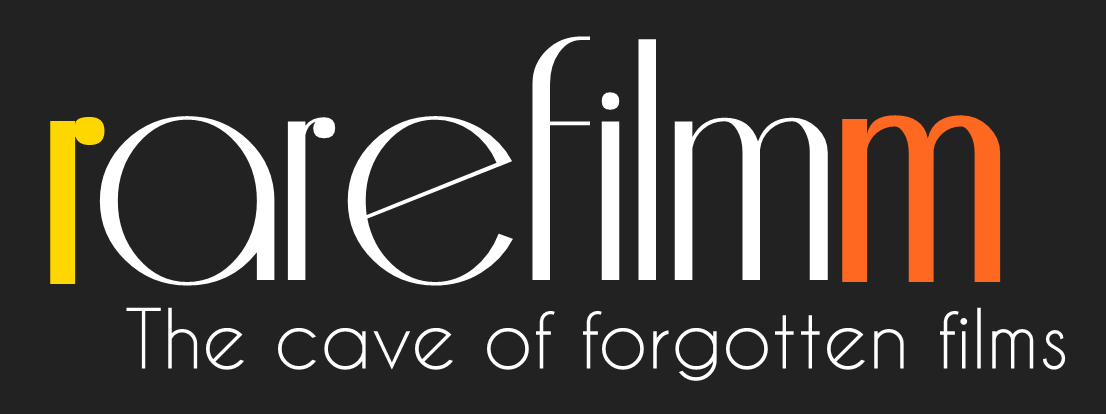Fresh out of prison, Git rescues a former best friend (now living with Git’s girlfriend) from a beating at the hands of loan sharks. He’s now in trouble with the mob boss, Tom French, who sends Git to Cork with another debtor, Bunny Kelly, to find a guy named Frank Grogan, and take him to a man with a friendly face at a shack across a bog. It’s a tougher assignment than it seems: Git’s a novice, Bunny’s prone to rash acts, Frank doesn’t want to be found (and once he’s found, he has no money), and maybe Tom’s planning to murder Frank, which puts Git in a moral dilemma. Then, there’s the long-ago disappearance of Sonny Mulligan. What’s a decent and stand-up lad to do?
Tag: USA
A rediscovered masterpiece, director Larry Clark’s As Above, So Below comprises a powerful political and social critique in its portrayal of Black insurgency. The film opens in 1945 with a young boy playing in his Chicago neighborhood and then follows the adult Jita-Hadi as a returning Marine with heightened political consciousness. Like The Spook Who Sat By the Door and Gordon’s War, As Above, So Below imagines a post-Watts rebellion state of siege and an organized Black underground plotting revolution. With sound excerpts from the 1968 HUAC report “Guerrilla Warfare Advocates in the United States,” As Above, So Below is one of the more politically radical films of the L.A. Rebellion.
This film is based on the famous horror story by Ambrose Bierce. It tells of a hunter whose young wife dies of fever. Her grief stricken husband prepares her body for burial, but during the night the forces of nature intervene to create a horrific and macabre ending.
A split screen shows two tightly synchronized, “impossible” shots of the same scene: a moving POV camera showing what the central character is looking at, and a stationary wide shot, both framing the entire action simultaneously. The deliberate positioning of the static, detached view above the erratic, close-up subjective POV of the central character lends an uneasy feeling to it. At the start of the film, we see the central character’s dream before he wakes up and comes out onto his balcony in the top screen (the bottom screen becomes his POV looking out the window, in sync with the top view.) Set in West Vancouver, BC.
When Max dies in an accident, he goes straight to hell. But the devil Barney makes him an offer: if he manages to get three innocent youths to sell him their souls in the next two months, he may stay on earth. Max accepts and returns to earth, equipped with special powers. However, his task is harder than expected, especially when 7-year-old Tobi demands that he marry his mother.
Hollywood legend Shirley Maclaine sings, dances and does commentary on the times in this speculative look forward at the United States’ next 200 years. Her guests are Jimmie Walker, Don Rickles, Bob Hope, Dean Martin, Jimmy Stewart, and Orson Welles.
Struggling actress accepts high paying job to play a rich heiress committed in a lunatic asylum, not knowing she’s really being set up as a surrogate for the real girl who’d been murdered.
The least known massively influential person in international cinema, Pierre Rissient is a samurai warrior on behalf of the films he believes in. Instigator of the Cercle MacMahon, assistant director on “Breathless,” champion of blacklisted filmmakers, confidant of Ford and Walsh, Hawks and Lang, Pierre was the first to detect the potential of Clint Eastwood, director, brought Chinese cinema to Cannes with “Touch of Zen,” discovered Jane Campion and has been a key behind-the-scenes figure in Cannes for more than forty years; he is also the only person who can circulate freely in the Palais du Festival at all hours in a t-shirt. In this film, surrounded by those he has promoted through the years, Pierre Rissient himself finally moves into the spotlight.

 For any questions or requests you can always find me at rarefilmm@gmail.com. Stay tuned for those new movies! Thank you once again for all the love and support and thanks a lot to everyone who keeps spreading the word about the site, the rarefilmm community is truly amazing, I'm very grateful for all your love and support
For any questions or requests you can always find me at rarefilmm@gmail.com. Stay tuned for those new movies! Thank you once again for all the love and support and thanks a lot to everyone who keeps spreading the word about the site, the rarefilmm community is truly amazing, I'm very grateful for all your love and support 
